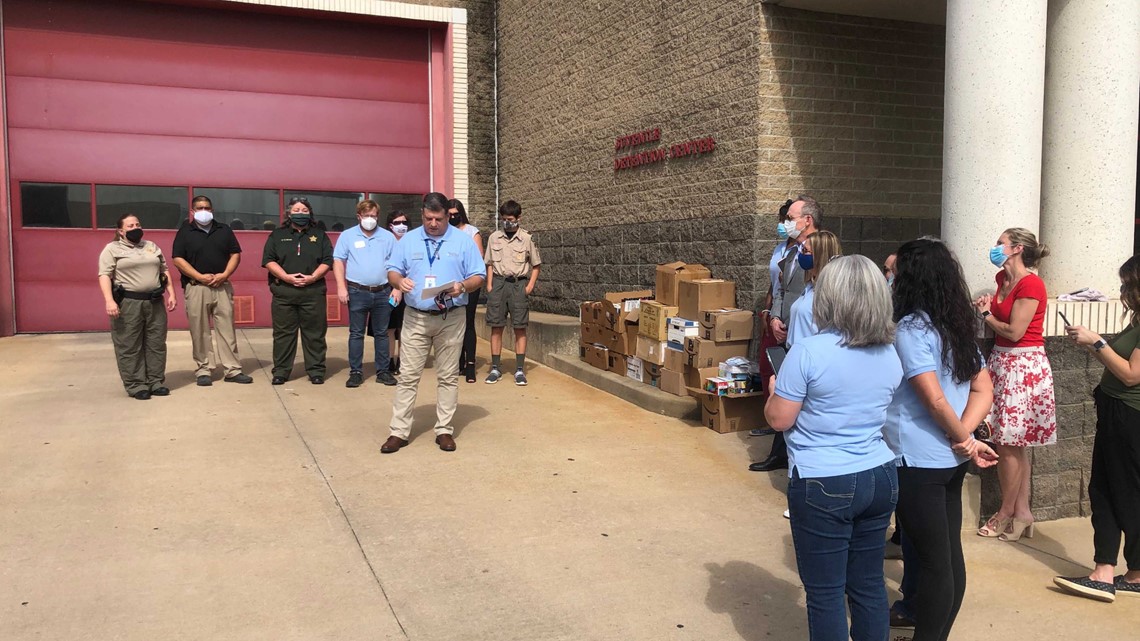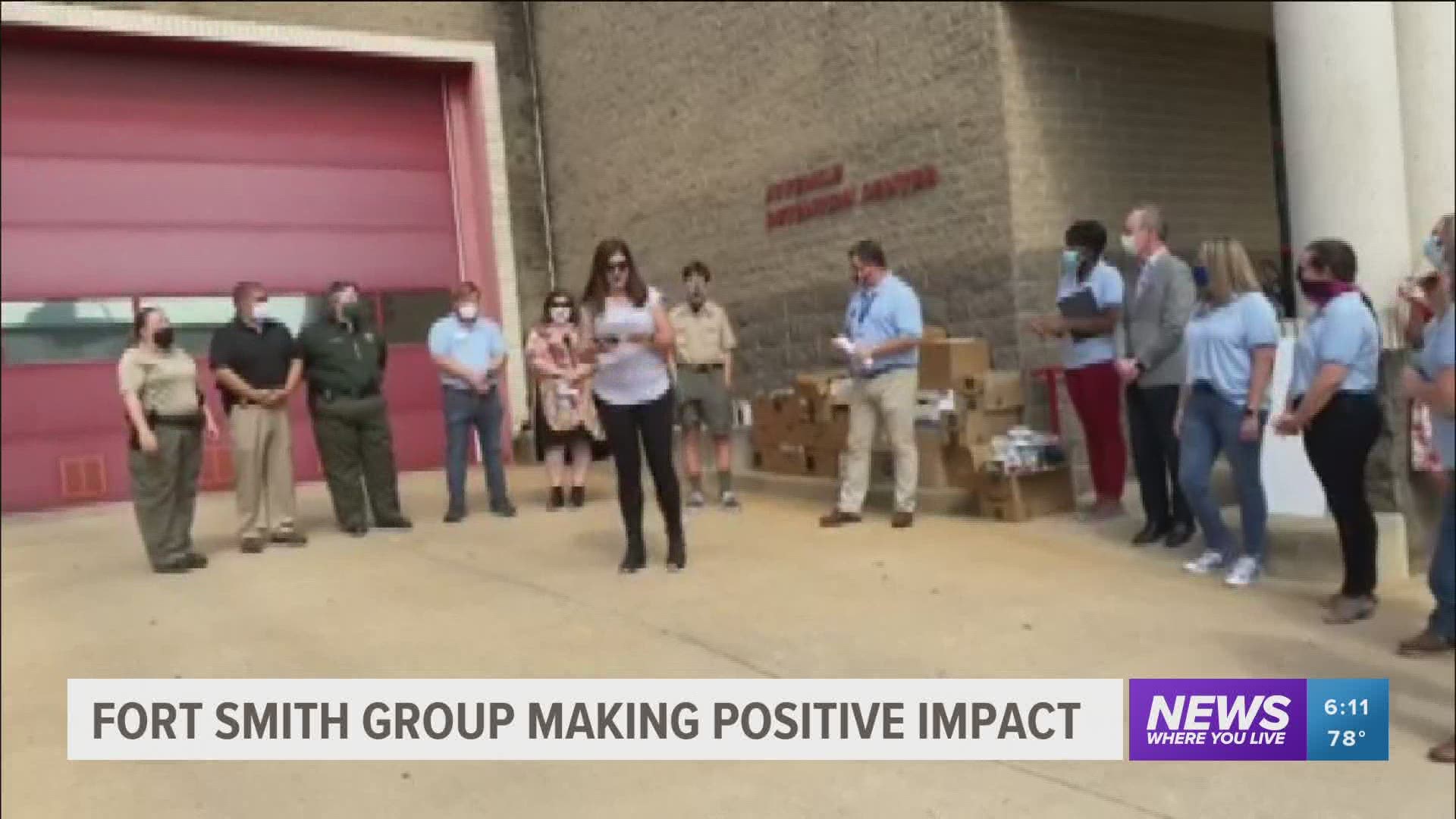Let me tell you something, folks. The Sebastian County Detention Center in Fort Smith, Arkansas? It’s more than just some building where people get locked up. This place has a story, a history, and a role in the community that goes beyond what meets the eye. Whether you're curious about its operations, how it impacts local residents, or even the lives of those inside, we're diving deep into this topic. So buckle up, because we're about to uncover everything you need to know.
You might be wondering, "Why should I care about a detention center?" Well, here's the thing—this isn't just about walls and bars. It's about understanding how our justice system works on the ground level, especially in smaller communities like Fort Smith. The Sebastian County Detention Center plays a crucial part in maintaining public safety while also dealing with challenges like overcrowding and rehabilitation programs. Sound interesting? Keep reading.
And hey, if you're here looking for specific info—whether it's visitation hours, inmate lookup, or anything else—you're in the right place. We've got all the details laid out for you, so you don't have to go digging through endless websites or complicated jargon. Let's get started!
Read also:What Did Pawn Stars Plead Guilty To The Inside Scoop You Need To Know
Table of Contents:
- A Brief History of Sebastian County Detention Center
- How the Detention Center Operates
- Facilities and Amenities Inside
- Visitation Rules and Procedures
- Rehabilitation Programs Available
- Meet the Dedicated Staff
- Challenges Faced by the Detention Center
- Community Impact and Relations
- Key Statistics and Data
- What’s Next for Sebastian County Detention Center?
A Brief History of Sebastian County Detention Center
Alright, let's rewind the clock a bit. The Sebastian County Detention Center wasn't always the massive facility it is today. Originally established decades ago, this detention center has evolved significantly over the years. It started as a modest holding area but eventually grew to accommodate the needs of an expanding population in Fort Smith and surrounding areas.
Back in the day, the facility faced its fair share of challenges. Overcrowding was a big issue, and resources were stretched thin. But thanks to modern renovations and increased funding, the detention center now stands as a testament to progress. It's not just about keeping people locked up anymore; it's about creating opportunities for change.
Did you know? In the early 2000s, the detention center underwent a massive expansion project. This allowed them to add new wings, improve security measures, and implement better living conditions for inmates. And yeah, that’s a big deal when you think about it.
How the Detention Center Operates
So, how exactly does the Sebastian County Detention Center function? Picture this: a well-oiled machine designed to maintain order while addressing the needs of both staff and inmates. The daily operations involve everything from processing new arrivals to ensuring that everyone follows the rules.
Day-to-Day Activities
Every day at the detention center starts early. Officers conduct routine checks, manage meals, and oversee various activities. Inmates are expected to follow strict schedules, which include work assignments, educational programs, and downtime. And trust me, there's no room for slackers around here.
Read also:List Of Army Jobs And Asvab Scores Your Ultimate Guide To Success
- Shift changes happen multiple times a day to ensure continuous supervision.
- Medical staff is always on standby to handle health emergencies.
- Counselors provide support for mental health issues and personal growth.
It's not just about locking people away. The goal is to create an environment where positive changes can happen. Of course, it's not perfect, but the staff works hard to make it as efficient as possible.
Facilities and Amenities Inside
Let's talk about what life looks like inside the walls of the Sebastian County Detention Center. While it may not be a five-star resort, the facility offers basic amenities to ensure the well-being of its residents. From dining halls to recreation areas, there's more to this place than meets the eye.
Recreation and Exercise
Inmates are given access to recreational facilities, including outdoor yards and indoor gyms. These areas aren't just for fun—they play a critical role in maintaining physical and mental health. Regular exercise helps reduce stress and promotes discipline, which is essential in such a controlled environment.
Plus, let's not forget about the educational resources available. Inmates have access to books, computers, and classes that teach skills like carpentry, plumbing, and even basic computer programming. It's all part of the bigger picture—preparing individuals for life after release.
Visitation Rules and Procedures
Now, here's something many people want to know: how do you visit someone at the Sebastian County Detention Center? Visitation policies are pretty straightforward, but they do require some preparation. First things first—you'll need to schedule your visit ahead of time. Walk-ins aren't allowed, and you'll want to make sure you follow the dress code.
What to Expect During Your Visit
When you arrive, expect a thorough screening process. Security is tight, and they mean business. You'll need to show ID, go through metal detectors, and possibly undergo a pat-down. Once inside, you'll meet your loved one in a designated visiting area. These sessions are usually limited to a certain amount of time, so make the most of it.
And listen up—no contraband allowed. That means no cell phones, no snacks, and definitely no weapons. If you're caught trying to sneak anything in, you could lose your visitation privileges. Simple as that.
Rehabilitation Programs Available
One of the most important aspects of the Sebastian County Detention Center is its commitment to rehabilitation. Gone are the days of simply locking people up and throwing away the key. Today, the focus is on helping inmates turn their lives around. How do they do it? Through a variety of programs designed to address different needs.
Education and Skill Development
Education is key, and the detention center offers classes in subjects like GED preparation, English as a second language, and vocational training. These programs give inmates the tools they need to succeed once they're released. Imagine learning how to fix cars or build furniture while serving time—that's real-world experience that can change someone's life.
Additionally, counseling services are available to help inmates deal with trauma, addiction, and other personal issues. Therapy sessions, group discussions, and one-on-one meetings with professionals provide a supportive environment for growth.
Meet the Dedicated Staff
Behind every successful operation is a team of dedicated individuals, and the Sebastian County Detention Center is no exception. From corrections officers to administrative staff, everyone plays a vital role in keeping things running smoothly. But who are these people, and what makes them tick?
Many of the officers have years of experience under their belts. They've seen it all—from minor infractions to major incidents—and they handle each situation with professionalism and care. The administrative team ensures that paperwork is in order, schedules are followed, and resources are allocated properly.
Why They Do It
You might wonder why anyone would choose such a demanding career path. For many, it's about making a difference. They believe in the potential for change and are passionate about creating a safer community. It's not always easy, but the satisfaction of knowing they're contributing to positive outcomes keeps them going.
Challenges Faced by the Detention Center
Of course, no facility is without its challenges. The Sebastian County Detention Center faces several hurdles that affect its ability to operate effectively. Overcrowding remains a significant issue, as does funding constraints and staffing shortages. But the staff and administration are constantly working to find solutions.
Addressing Overcrowding
One of the biggest problems is overcrowding. With limited space and a growing inmate population, the detention center must get creative. They've implemented alternative sentencing programs, early release options, and partnerships with other facilities to ease the burden. While it's not a perfect fix, it's a step in the right direction.
Financial limitations also pose a challenge. Running a detention center isn't cheap, and budgets are often tight. The staff must prioritize spending to ensure essential services aren't compromised. It's a delicate balance, but one they manage surprisingly well.
Community Impact and Relations
The relationship between the Sebastian County Detention Center and the local community is complex yet vital. On one hand, the facility provides jobs and contributes to the economy. On the other hand, it raises concerns about safety and fairness within the justice system.
Community outreach programs aim to bridge the gap between the detention center and the public. Events like open houses and educational seminars give residents a chance to learn more about what happens behind closed doors. Transparency builds trust, and trust leads to cooperation.
Key Statistics and Data
Numbers don't lie, and the statistics surrounding the Sebastian County Detention Center tell an important story. As of the latest reports, the facility houses approximately [insert current number] inmates, with a staff-to-inmate ratio of [insert ratio]. These figures highlight the scale of operations and the challenges faced by the team.
Recidivism rates—a measure of how often former inmates return to custody—are another critical metric. Efforts to reduce these numbers through rehabilitation programs have shown promising results, though there's still work to be done.
What’s Next for Sebastian County Detention Center?
Looking ahead, the future of the Sebastian County Detention Center seems bright. Plans for further expansions and modernizations are already in motion, ensuring the facility remains equipped to handle future demands. Innovations in technology and increased focus on mental health support will play key roles in shaping the next chapter.
Ultimately, the goal is to continue improving conditions for both staff and inmates while fostering a safer, more just society. It's a tall order, but with the right people and resources, anything is possible.
Kesimpulan
Well, there you have it—a comprehensive look at the Sebastian County Detention Center in Fort Smith, Arkansas. From its history and daily operations to the challenges it faces and the future ahead, we've covered it all. Understanding this facility and its role in the community is essential for anyone interested in criminal justice reform or simply curious about how things work behind the scenes.
So, what can you do? If you found this article helpful, why not share it with others? Or better yet, leave a comment below with your thoughts or questions. The more we talk about these topics, the closer we get to meaningful change. Thanks for reading, and stay tuned for more insightful content!


